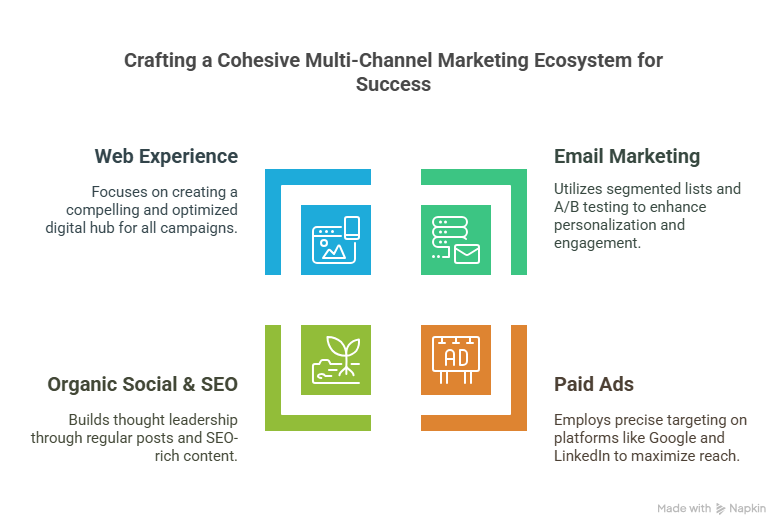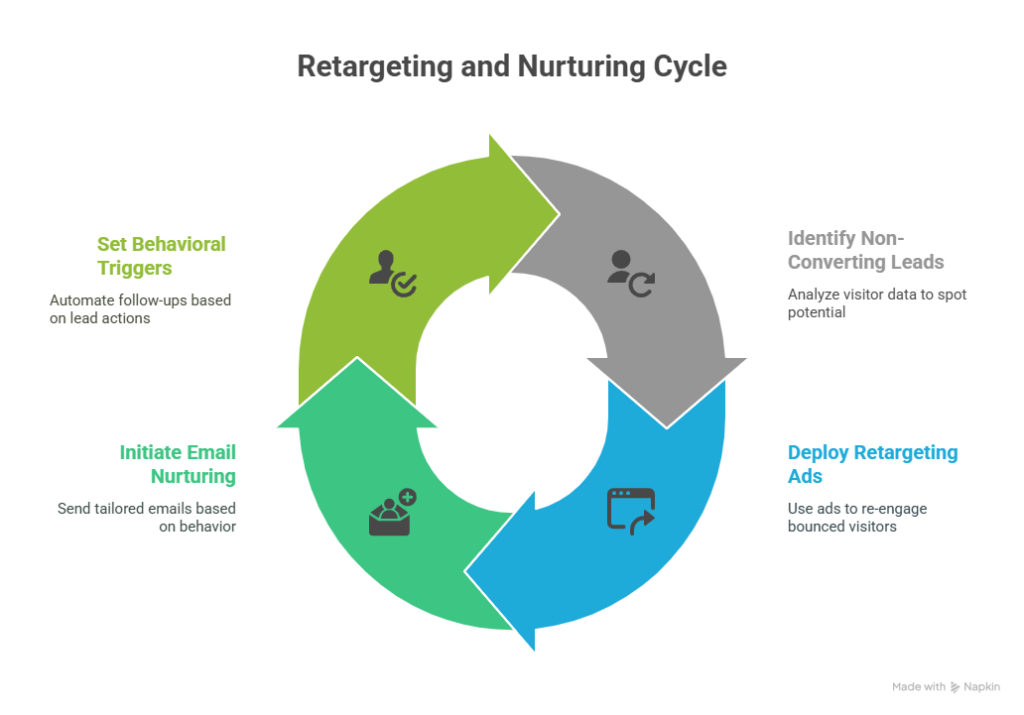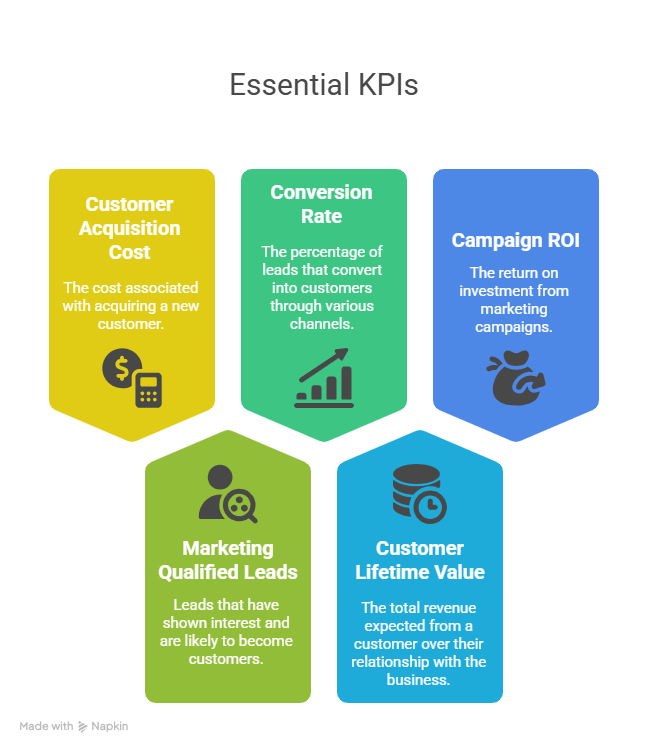How to Drive Explosive Growth with Multi-Channel Marketing
Introduction: Why Multi-Channel is the Growth Engine for Modern B2B Tech Companies
In today’s fast-paced digital environment, relying on a single marketing channel is no longer enough—especially in B2B tech industries where sales cycles are long and buyer journeys are complex. A multi-channel strategy allows you to meet your audience where they are, guide them through awareness to action, and reinforce your message through repeated, value-driven interactions.
Whether you’re targeting engineers, procurement leads, or executives, using a combination of inbound and outbound tactics across channels ensures better visibility, stronger engagement, and accelerated growth.
Outbound vs. Inbound: Striking the Right Balance for B2B Tech
In high-tech B2B, outbound marketing still plays a valuable role, especially for lead generation in niche or emerging sectors. Cold outreach via email or LinkedIn, targeted digital ads, and account-based marketing (ABM) can help you reach decision-makers faster.
However, inbound marketing is your long game. Content-rich assets like blogs, webinars, and SEO-optimized landing pages draw qualified leads over time—often at a lower cost per acquisition.

Pro Tip
Crafting High-Converting Campaigns Across Key Channels
Each channel has its own strengths—and limitations. The key is to tailor your message and format to fit the platform while maintaining a cohesive brand voice.
- Email Marketing: Use segmented lists and dynamic content to personalize outreach. Include strong CTAs and A/B test subject lines and layouts to boost open and click-through rates.
- Paid Ads: Platforms like Google Ads and LinkedIn enable precise targeting based on job title, company size, or intent keywords. Align ad creative with landing page messaging to boost conversions.
- Organic Social & SEO: Regular, relevant posts on LinkedIn, combined with SEO-rich blog content, can build thought leadership and long-term discoverability.
- Web Experience: Your website is more than a digital brochure—it's the central hub of your marketing ecosystem. All campaigns should lead to clear, compelling, and optimized landing experiences. Focus on fast load times, mobile responsiveness, intuitive navigation, and clear CTAs that match user intent. A frictionless user experience improves conversion rates across every channel.
Bonus Tip

Content Tip
Content Marketing That Builds Authority and Trust
Content is your secret weapon for long-term growth. It educates, builds credibility, and supports every stage of the buyer journey.
- Thought Leadership: Publish expert-level blogs, speak on podcasts, or host webinars to position your brand as an industry leader.
- Whitepapers & eBooks: These gated assets not only generate leads but also provide valuable data on your audience’s interests.
- Case Studies: Real-world examples of client success are powerful proof points—especially in industries where trust and technical reliability matter.
Retargeting & Lead Nurturing: Keep the Conversation Going
Most leads won’t convert on the first visit—especially in B2B industries where decision-making is complex and involves multiple stakeholders. Research shows that prospects often need 5 to 7 touchpoints before taking meaningful action. This is where retargeting and lead nurturing play a critical role in keeping your brand top-of-mind, building trust, and gradually moving leads toward conversion.

Retargeting Ads: Bringing Visitors Back into Your Funnel
Not all website visitors are ready to buy immediately, but that doesn’t mean they aren’t interested. Retargeting helps you reconnect with these potential customers by displaying ads across various digital platforms based on their prior interactions.
- Website Retargeting: Use Google Display Network, LinkedIn, or Facebook Ads to show targeted ads to visitors who left without converting.
- Intent-Based Retargeting: Focus on leads who viewed high-value pages such as product demos, pricing pages, or whitepapers—indicating stronger buying intent.
- Personalized Ad Creative: Showcase relevant content, promotions, or case studies that align with their previous interactions.
- Sequential Messaging: Avoid showing the same ad repeatedly; instead, create a series of retargeting ads that progressively educate and nurture leads over time.
Email Nurturing Sequences: Guiding Leads Through the Buyer Journey
Email remains one of the most effective ways to nurture leads—when done correctly. Instead of blasting generic messages, use segmentation and automation to deliver the right content at the right time.
- Welcome Series: Send an introduction email with valuable resources after someone subscribes or downloads gated content.
- Educational Nurture Streams: Share industry insights, guides, or case studies that address common pain points and build credibility.
- Behavior-Based Follow-Ups: Trigger personalized emails based on actions—like reminding users about an abandoned demo request or offering additional details on a viewed product.
- Multi-Touch Sequences: Space out emails over weeks or months, gradually increasing urgency with special offers, exclusive webinars, or personalized outreach.
Leveraging Behavioral Triggers for Smarter Lead Engagement
Modern marketing automation tools allow businesses to track user behavior and trigger engagement at key moments. Instead of relying on manual follow-ups, leverage automation to engage leads dynamically.
- Lead Scoring: Assign scores based on user actions (e.g., downloading an eBook, attending a webinar, or visiting your pricing page multiple times).
- Triggered Outreach: When a lead reaches a certain score, automatically notify sales or send a personalized offer.
- Multi-Channel Engagement: Use a mix of email, SMS, and LinkedIn messages to follow up in a way that aligns with the prospect’s preferences.
Building a Long-Term Relationship, Not Just Closing a Deal
Retargeting and lead nurturing aren’t just about driving immediate conversions—they’re about creating lasting relationships. By consistently delivering valuable, relevant, and timely content, you establish your brand as a trusted advisor rather than just another vendor. This improves conversion rates while also increasing customer lifetime value (LTV) and fostering long-term loyalty.
Pro Tip
Track What Matters: KPIs & Tools for Scalable Success
To grow effectively, you need to know what’s working—and what’s not. A multi-channel strategy can drive significant growth, but without precise tracking and optimization, you may waste budget on underperforming tactics or miss opportunities to double down on successful ones.
The Importance of Data-Driven Decision-Making
Marketing isn’t just about creative campaigns—it’s about measurable impact. By tracking the right key performance indicators (KPIs), you can make informed decisions, allocate resources efficiently, and continuously refine your approach for maximum ROI.

Recommended Tools for Tracking and Optimization:
- HubSpot, Pardot, or Marketo – Manage lead nurturing, scoring, and lifecycle tracking in one place.
- Google Analytics 4 (GA4) – Gain insights into website traffic, visitor behavior, and conversion paths.
- LinkedIn Campaign Manager & Google Ads – Measure ad performance and refine targeting based on real-time data.
- Hotjar, Crazy Egg, or FullStory – Use heatmaps and session recordings to understand how users interact with your website.
- UTM Parameters & Campaign Tracking – Assign trackable URLs to every campaign to pinpoint what drives conversions.
Essential KPIs to Monitor:
- Customer Acquisition Cost (CAC): How much does it cost to acquire a new customer across all marketing efforts?
- Marketing Qualified Leads (MQLs): Are your campaigns generating high-quality leads that meet your target criteria?
- Conversion Rate by Channel: Which marketing channels drive the highest engagement and conversions?
- Customer Lifetime Value (LTV): How much revenue does an average customer generate over time, and how does this compare to your CAC?
- Campaign ROI: Are your paid campaigns delivering profitable returns, or do they need adjustments?
- Engagement Metrics: Track open rates, click-through rates (CTR), and dwell time on content to assess effectiveness.
The Key to Growth: Test, Learn, and Optimize
Tracking is only the first step—what you do with the data matters most. Regularly analyze your KPIs, run A/B tests to refine messaging and landing pages, and adjust your strategy based on performance insights. The brands that scale successfully are those that treat marketing as an ongoing optimization process rather than a one-time effort.
By building a culture of data-driven marketing, you can confidently scale your business with high-performing, cost-effective campaigns.
Conclusion: Build Smarter, Scale Faster
The key to explosive growth lies in strategic integration. By aligning outbound and inbound tactics, optimizing across multiple channels, and doubling down on content and analytics, your marketing can become a true growth engine.



